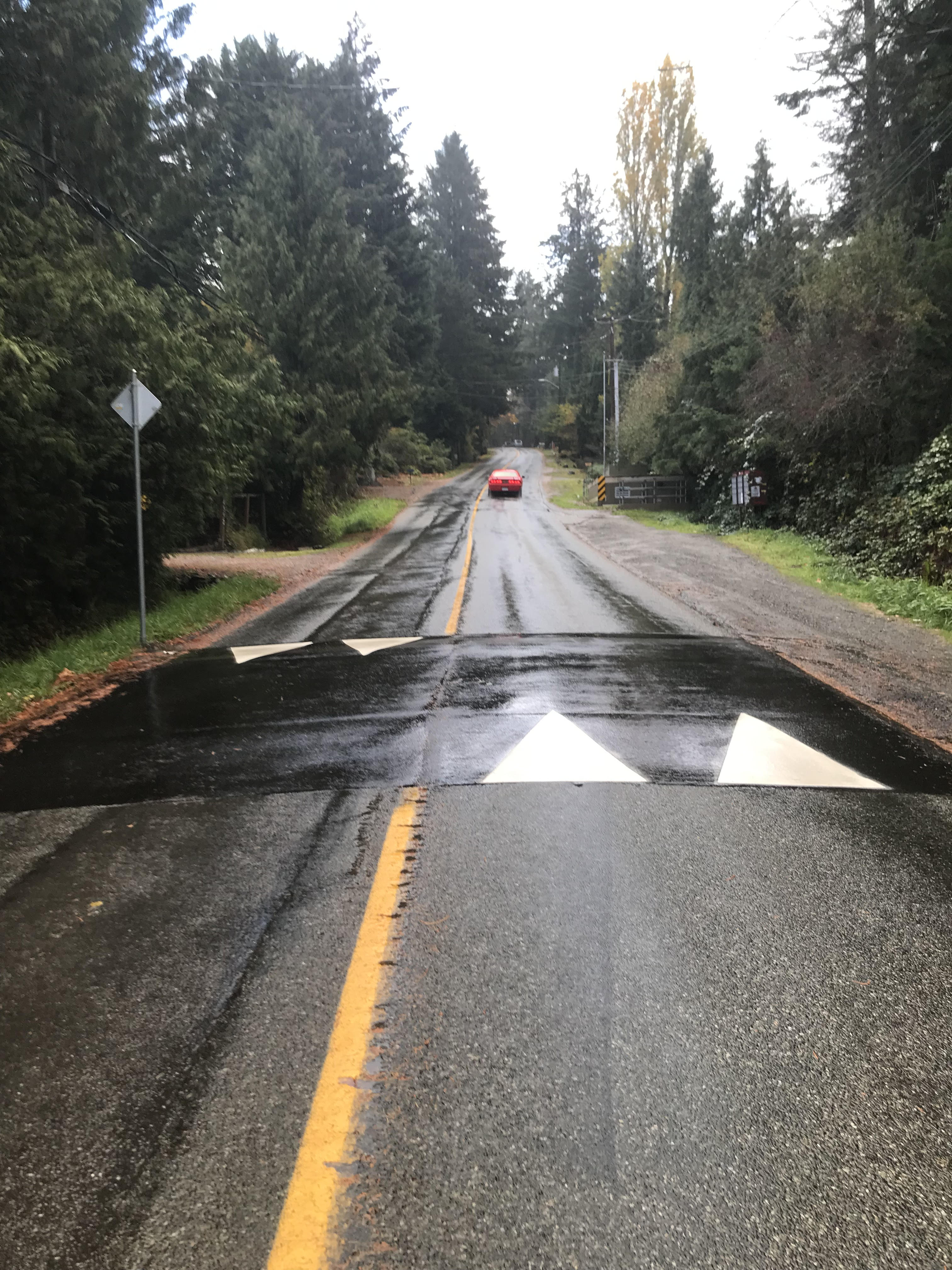
This project implemented traffic calming measures along 5km of Oldfield and southern Old West Saanich Roads. It will lower vehicle speeds, promote safety of vulnerable road users, and encourage through traffic to choose more appropriate routes (two parallel major roads).
Residents and visiting vulnerable road users (VRUs) often report negative impacts of traffic on the Saanich Roads on their active mode mobility and neighbourhood livability. Residents report feeling unsafe during such activities as traveling to local destinations, walking their dogs or walking to to the mail, pushing a pram, or collecting young children off the school bus. Some residents have ceased walking on the road. Cyclists report vehicles passing too close or driving aggressively, sometimes with bullying behaviour. Equestrians need to use Oldfield and Brookleigh to access the recreational trails in Elk/Beaver Lake Park, and do not feel safe doing so. Drivers doing the limit are sometimes tailgated or passed. Due to higher vehicle speeds, traffic noise is high. Excessive speeding and racing is reported by residents during the day and overnight.
The project did improve the safety and comfort of VRUs by reinforcing newly reduced speed limits, especially in the proximity of the four platforms. Speed data plus anecdotal observations by both Livable Roads for Rural Saanich (LRRS) and Saanich confirm that this project has slowed traffic down somewhat along the corridor.
More traffic is traveling at slower speeds. There are anecdotal observations of less tailgating, less passing, less racing, and some trucks going slower. However, the percentage of traffic travelling above 50 kph (the speed limit is 40 kph) still remains at 52-74%, and 15% of the traffic is driving at 57-65 kph. This is still too high for VRUs.
LRRS views these results as a success, and simply an indicator that more speed platforms are necessary on a corridor as long as 5 kilometers. Also more small interventions are needed in areas of curves and poor sight lines where speed platforms may not be the solution. More education of the public is also needed on the purposes of slowing traffic down, and on alternatives for drivers needing to speed.
Without the grant, LRRS, with the support of Saanich, we would not have made this significant amount of progress.

